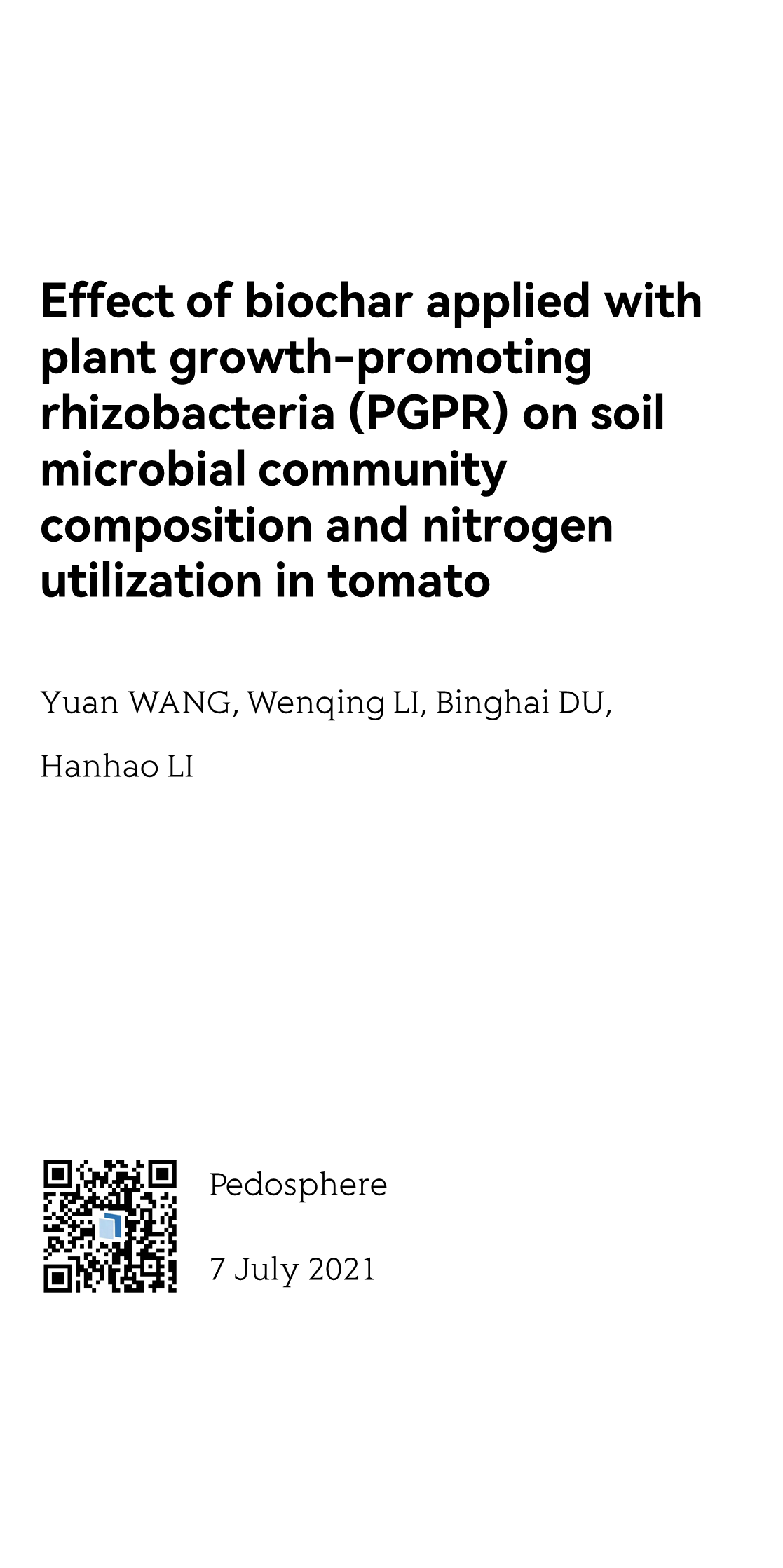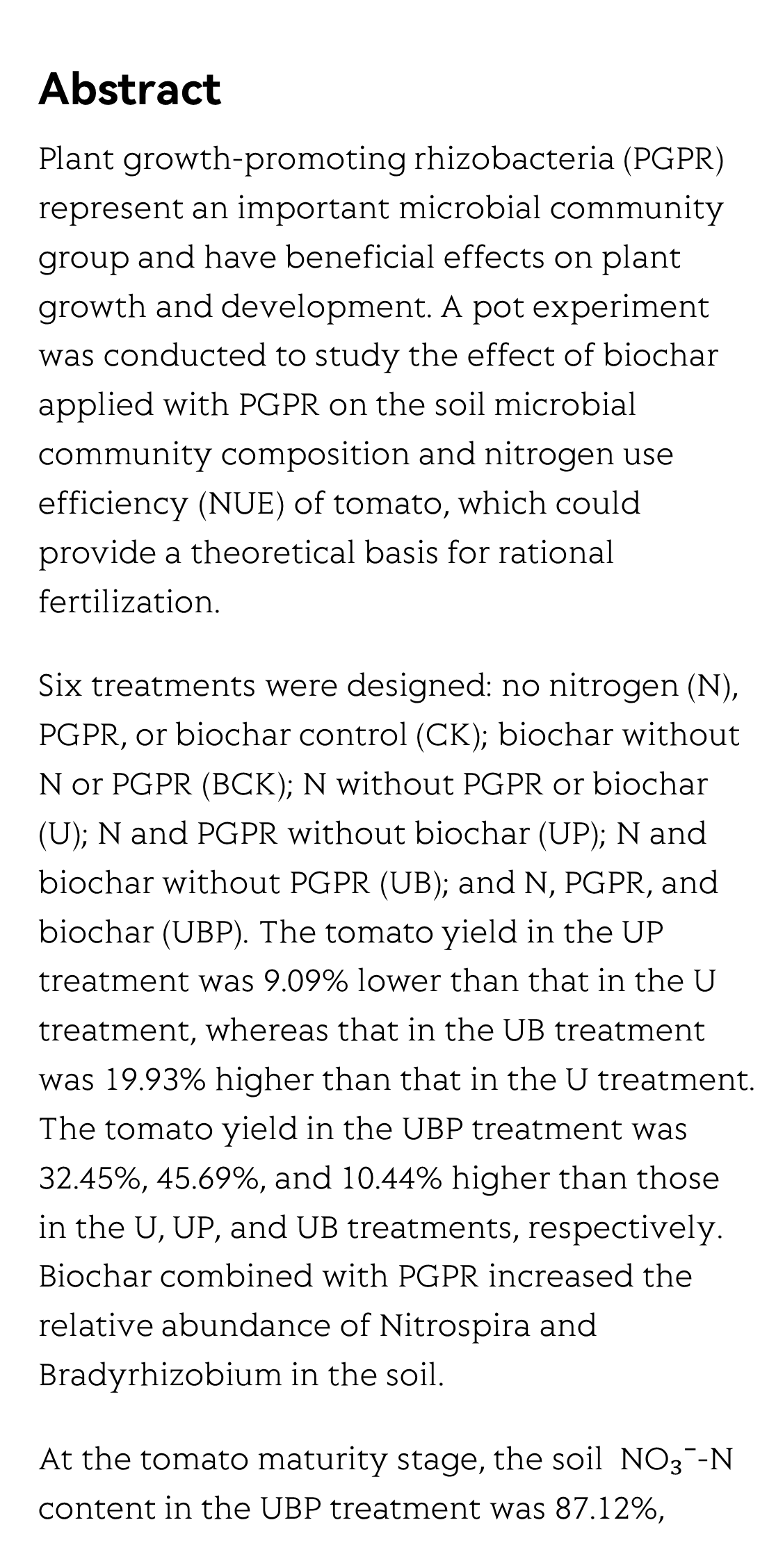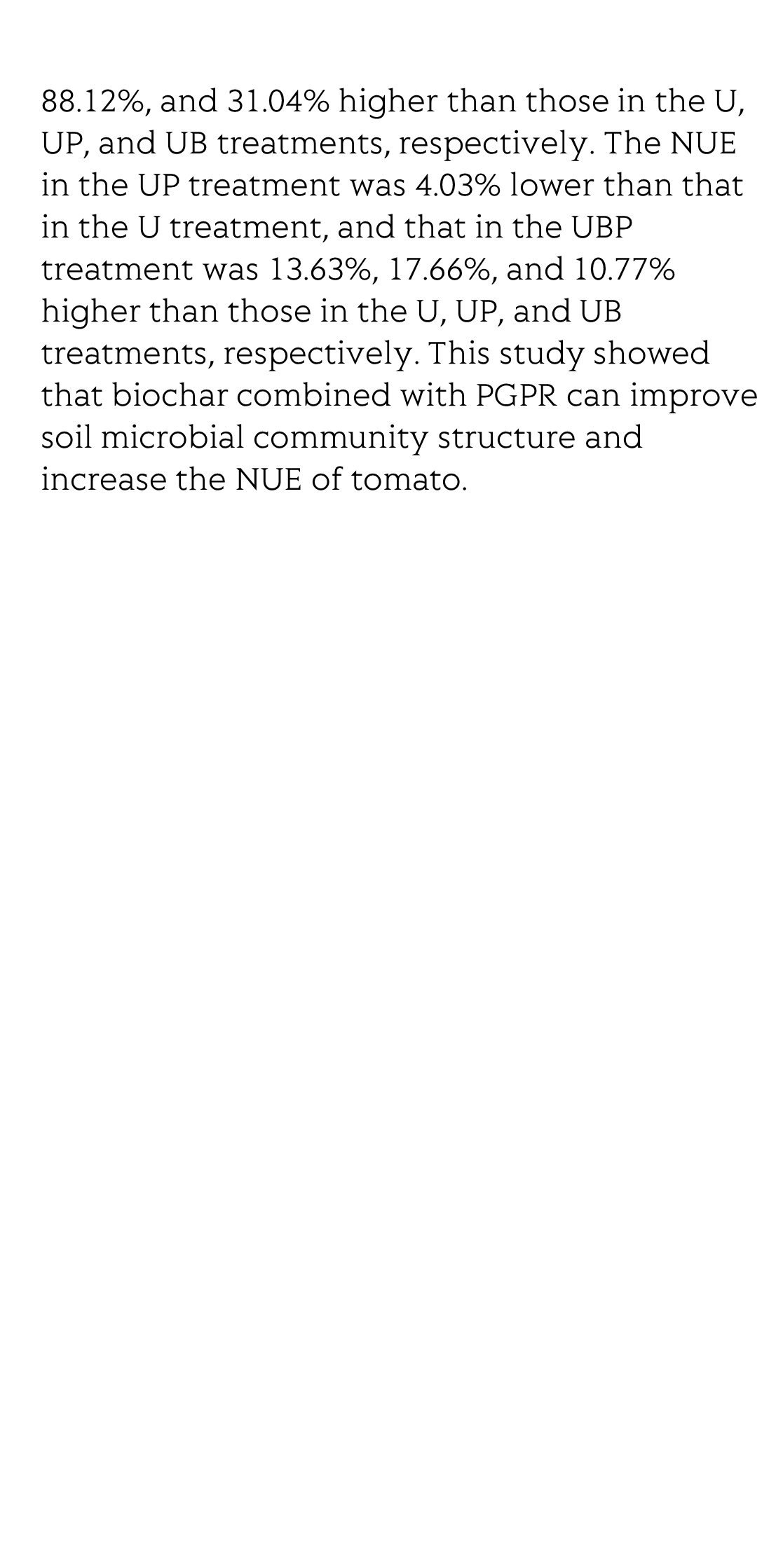Effect of biochar applied with plant growth-promoting rhizobacteria (PGPR) on soil microbial community composition and nitrogen utilization in tomato
生物质炭与植物促生根际细菌(PGPR)配合使用对番茄土壤微生物群落组成和氮素利用的影响
トマトの土壌微生物群集組成と窒素利用に及ぼす植物成長促進根圏細菌(PGPR)を適用したバイオ炭の影響
토마토의 토양 미생물 군집 구성 및 질소 이용에 대한 식물 생장 촉진 리조박테리아(PGPR)를 적용한 바이오 숯의 효과
Efecto del biocarbón aplicado con rizobacterias promotoras del crecimiento vegetal (PGPR) sobre la composición de la comunidad microbiana del suelo y la utilización de nitrógeno en tomate
Effet du biochar appliqué avec des rhizobactéries favorisant la croissance des plantes (PGPR) sur la composition de la communauté microbienne du sol et l'utilisation de l'azote chez la tomate
Влияние биоугля, внесенного с ризобактериями, способствующими росту растений (PGPR), на состав почвенного микробного сообщества и использование азота в томатах
トマトの土壌微生物群集組成と窒素利用に及ぼす植物成長促進根圏細菌(PGPR)を適用したバイオ炭の影響
토마토의 토양 미생물 군집 구성 및 질소 이용에 대한 식물 생장 촉진 리조박테리아(PGPR)를 적용한 바이오 숯의 효과
Efecto del biocarbón aplicado con rizobacterias promotoras del crecimiento vegetal (PGPR) sobre la composición de la comunidad microbiana del suelo y la utilización de nitrógeno en tomate
Effet du biochar appliqué avec des rhizobactéries favorisant la croissance des plantes (PGPR) sur la composition de la communauté microbienne du sol et l'utilisation de l'azote chez la tomate
Влияние биоугля, внесенного с ризобактериями, способствующими росту растений (PGPR), на состав почвенного микробного сообщества и использование азота в томатах



Reviews and Discussions
